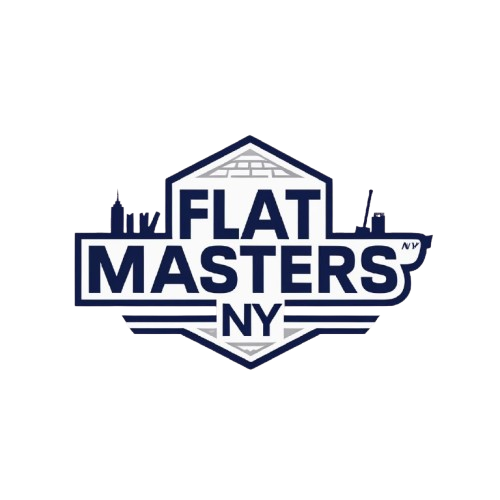Expert Flat Roof Rain Noise Reduction Solutions for Your Home
Rain drumming on your flat roof keeping you awake? You're not alone. After handling over 1,500 flat roof projects across Queens, I can tell you that flat roof rain noise reduction is one of the most common complaints we hear from homeowners in Astoria, Long Island City, and Forest Hills.
The thing about flat roofs is they act like giant drums when rain hits them. Unlike pitched roofs where water runs off quickly, flat roofs collect water temporarily, and that creates a continuous drumming sound that can drive you crazy at 2 AM.
Why Flat Roofs Are Naturally Noisier
Here's what happens: rain hits your flat roof and has nowhere to go immediately. It pools, bounces, and creates vibrations that travel through the roof structure into your living space. The larger the roof surface, the louder it gets. I've worked on commercial buildings in Sunnyside where you literally can't hold a conversation during heavy rain.
Most flat roofs in Queens are built with minimal insulation between the roof membrane and the ceiling below. That's your problem right there.
Proven Methods for Noise Control on Flat Roofs
Let me break down the solutions that actually work, based on real projects we've completed:
Add Mass-Loaded Vinyl Barrier
This is my go-to solution for immediate results. We install a mass-loaded vinyl barrier between the roof deck and the membrane. It's dense, flexible, and specifically designed to block sound transmission. Last month we did this on a two-story home in Elmhurst - the homeowner said it was like night and day.
Upgrade Your Roof Insulation
More insulation means less noise transfer. We typically recommend adding at least 2-3 inches of rigid foam insulation above the roof deck. This serves double duty - reduces noise AND improves energy efficiency. Win-win.
Install Sound-Dampening Underlayment
Before we install the new roofing membrane, we can add specialized acoustic underlayment. It's not cheap, but it works incredibly well for how to stop rain noise on flat roof situations.
| Noise Reduction Method | Effectiveness Rating | Cost Range (per sq ft) | Best For |
|---|---|---|---|
| Mass-Loaded Vinyl Barrier | Excellent (85% reduction) | $2.50-$4.00 | Existing roofs, quick fixes |
| Additional Rigid Foam Insulation | Very Good (70% reduction) | $1.80-$3.20 | Full roof replacements |
| Acoustic Underlayment | Good (60% reduction) | $1.20-$2.10 | Budget-conscious homeowners |
| Green Roof System | Excellent (90% reduction) | $8.00-$15.00 | Premium installations |
The Green Roof Solution
Now here's something interesting - we've been doing more green roofs in Queens lately, and they're absolutely fantastic for noise control. The soil and vegetation act as natural sound dampeners. Plus you get all the environmental benefits. I just finished one on a brownstone in Jackson Heights where the owner said rain sounds like a gentle whisper now instead of machine gun fire.
The initial cost is higher, but the long-term benefits are incredible. Better insulation, stormwater management, and yes - virtually eliminates rain noise.
Quick Fixes That Don't Really Work
Let me save you some money and frustration. I've seen homeowners try these "solutions" that don't deliver:
- Spray foam from underneath - helps slightly but doesn't address the root cause
- Adding carpet or rugs to the room below - waste of time for this level of noise
- Playing white noise machines - you're just masking the problem
- Coating the roof with "sound-deadening" paint - marketing gimmick, nothing more
When to Call Flat Masters NY
Look, some noise reduction projects you can DIY, but flat roof rain noise reduction isn't one of them. We're dealing with your roof's structural integrity here. One mistake and you're looking at water damage, mold, or worse.
I've been in this business for over two decades, and I've seen too many well-intentioned homeowners create bigger problems trying to fix noise issues themselves. The materials alone require specific knowledge about compatibility with your existing roof system.
What to Expect During Installation
Here's how we typically handle a noise reduction project: First, we do a thorough inspection to identify exactly where the noise is transferring through your roof system. Sometimes it's not just the roof itself - could be gaps in flashing, inadequate sealing around penetrations, or thermal bridging through the structure.
Most installations take 2-3 days depending on the size of your roof and which methods we're using. We work with your schedule because we know how disruptive construction can be.
The weather's always a factor here in Queens. We're not installing noise barriers in the rain - that defeats the purpose and compromises the installation quality.
Cost Considerations for Noise Control
Honestly, budget varies wildly based on what your roof needs. A basic acoustic underlayment project might run $800-1,500 for a typical Queens rowhouse. Full noise reduction with mass-loaded vinyl and additional insulation? You're looking at $3,000-7,000+.
I always tell customers to think long-term. That $4,000 investment in proper noise control also improves your home's energy efficiency, potentially adds value, and gives you back your peace of mind.
Maintenance After Installation
Once we've solved your rain noise problem, maintenance is minimal. The materials we use are designed to last as long as your roof system itself. Just stick to your regular roof inspection schedule - twice a year is what I recommend for flat roofs in this climate.
One thing to watch for: if the noise starts coming back gradually, it usually means water is getting where it shouldn't be. That's when you call us immediately, not after the next big storm.
Your flat roof doesn't have to sound like a percussion section every time it rains. With the right approach and quality materials, we can get your home back to being the peaceful retreat it should be. After all, you shouldn't need earplugs to sleep in your own house.

